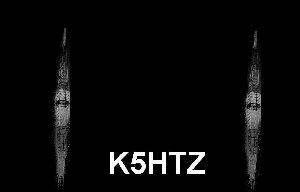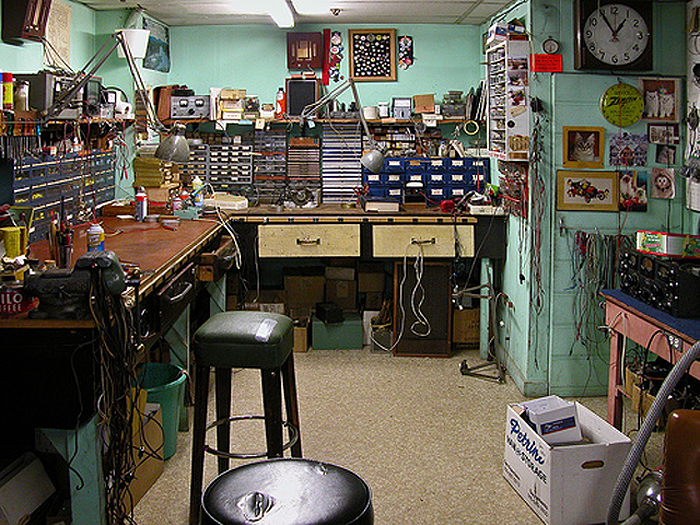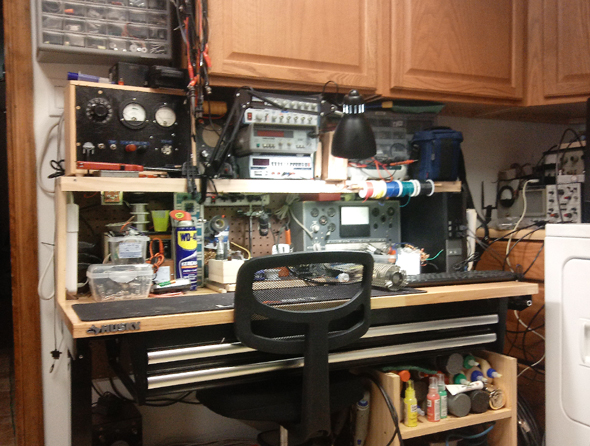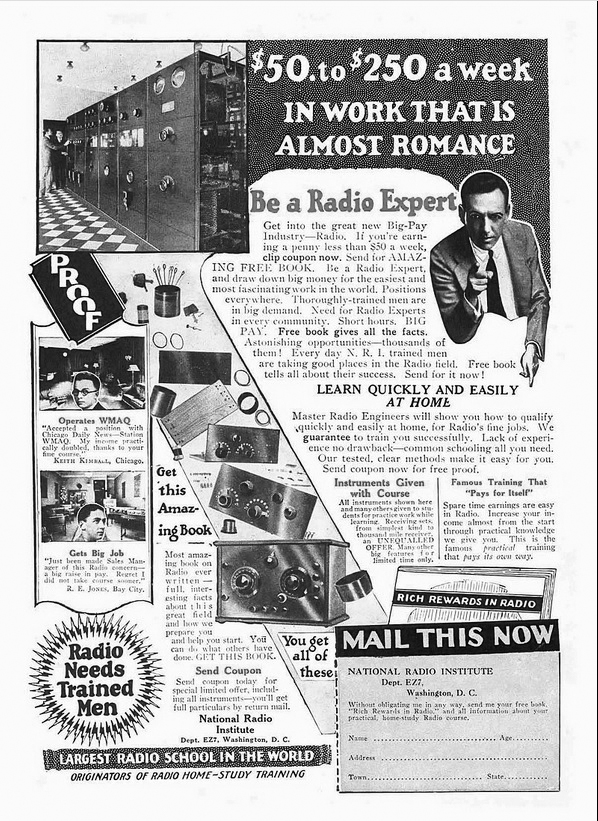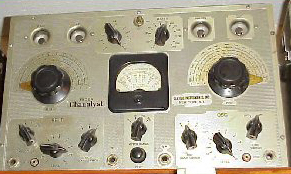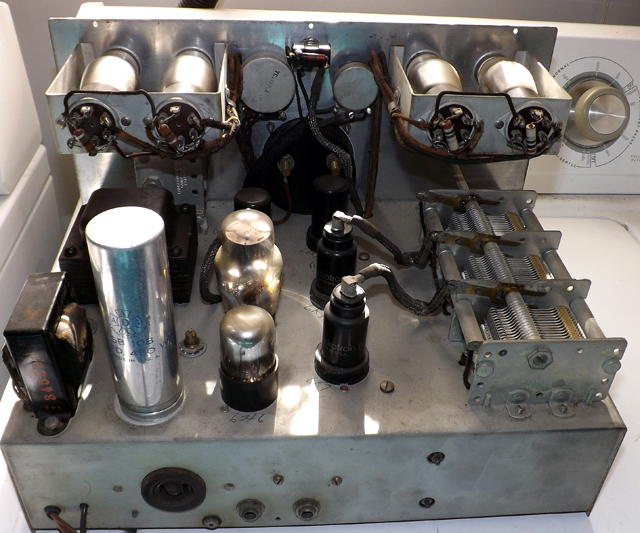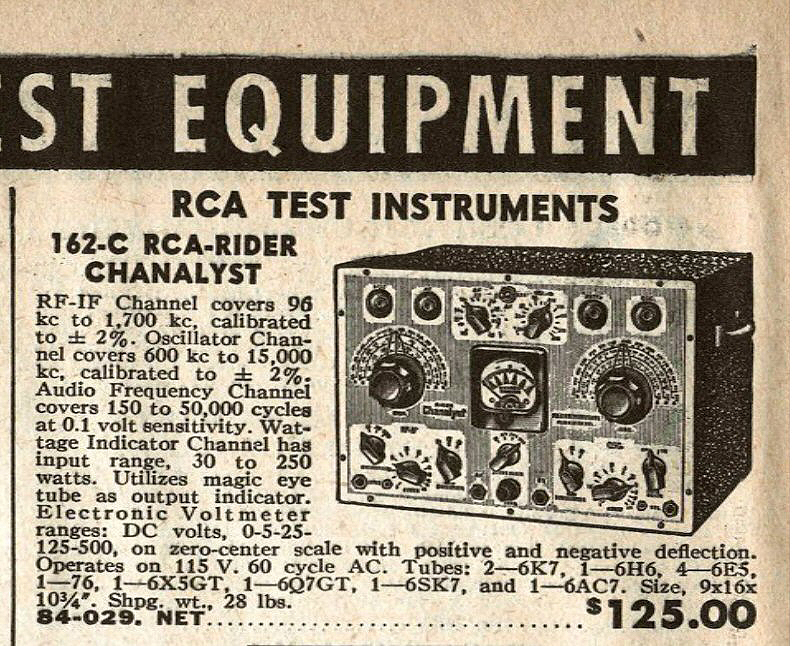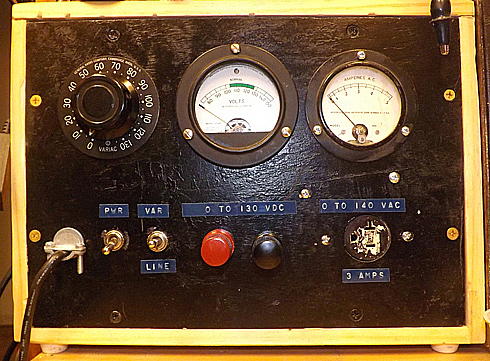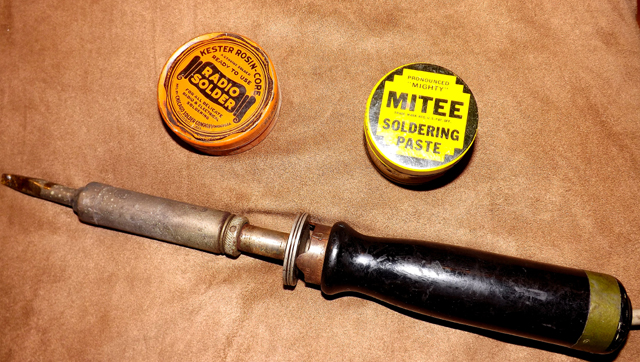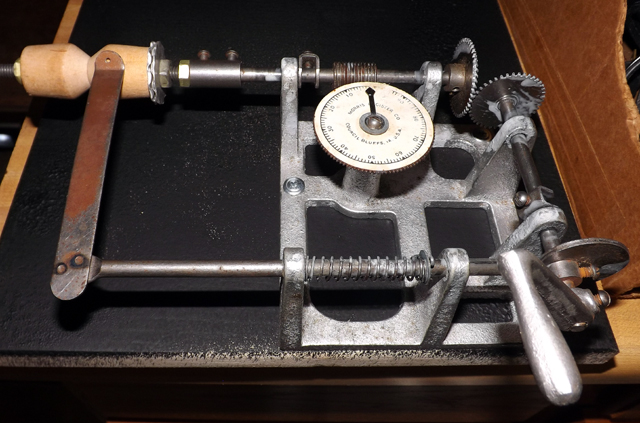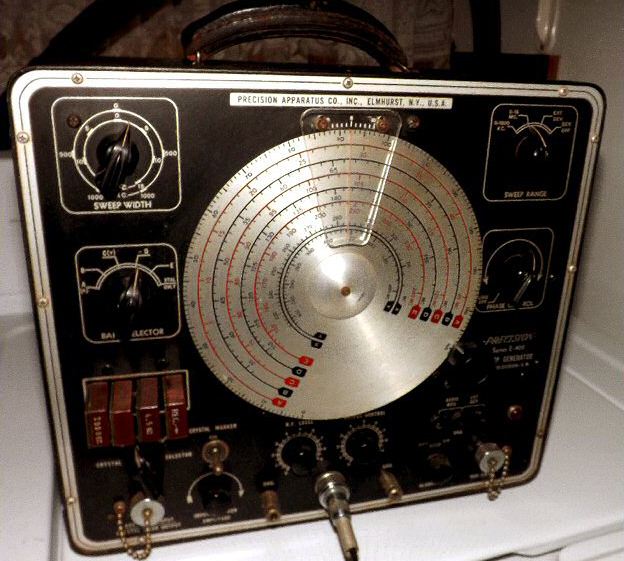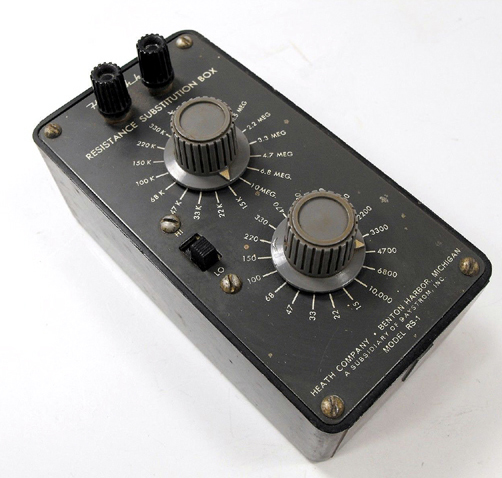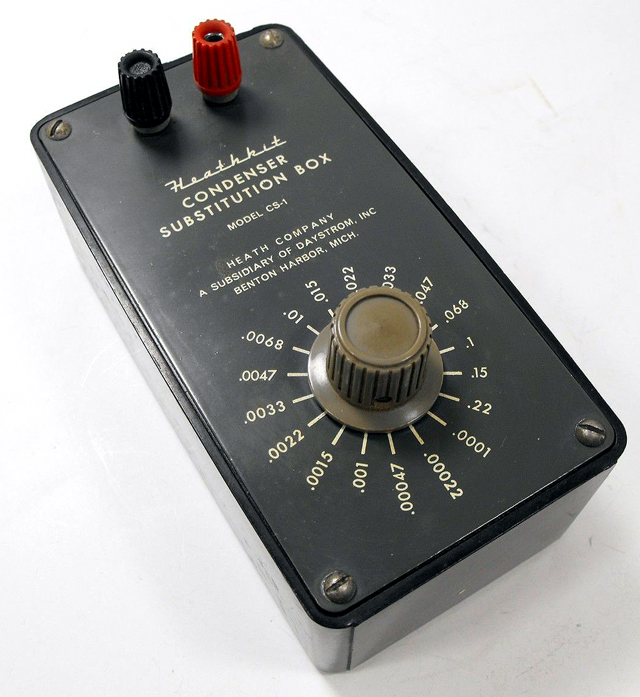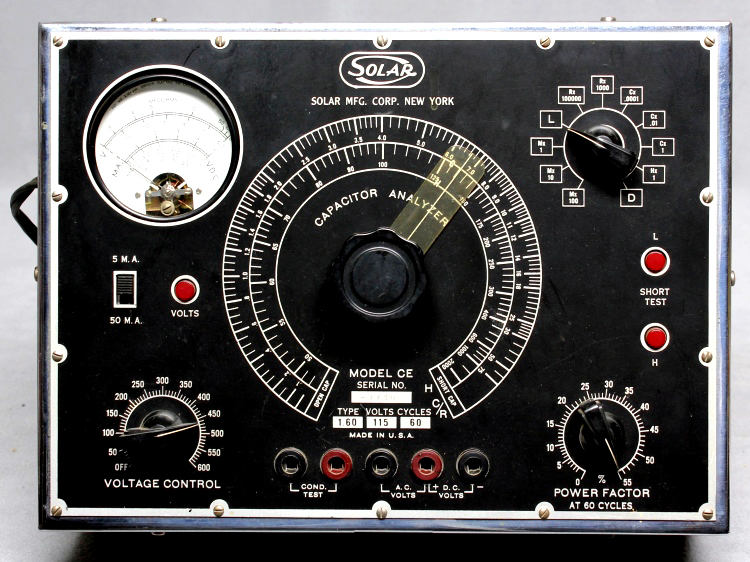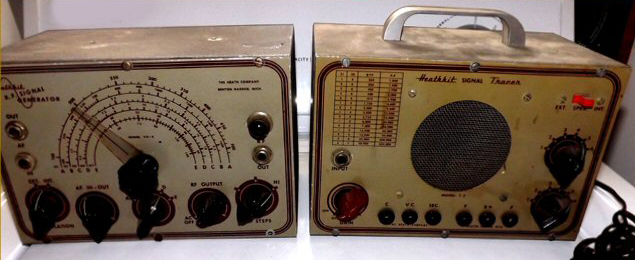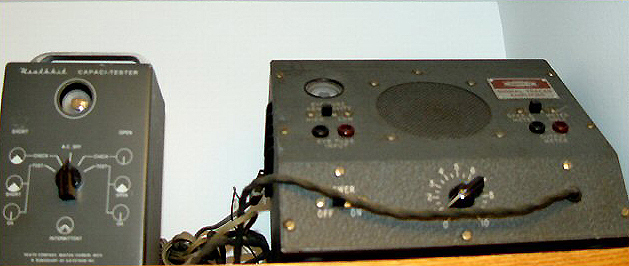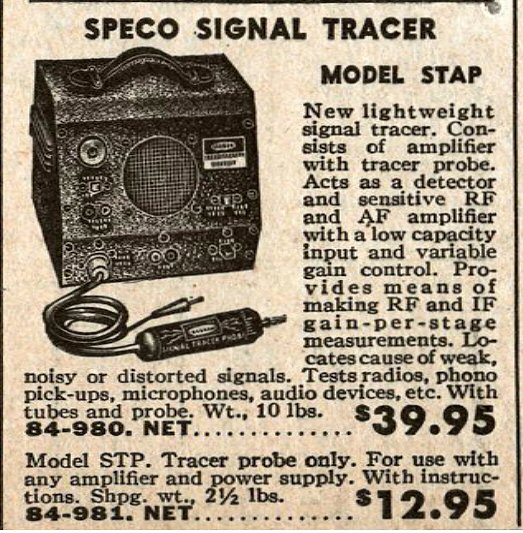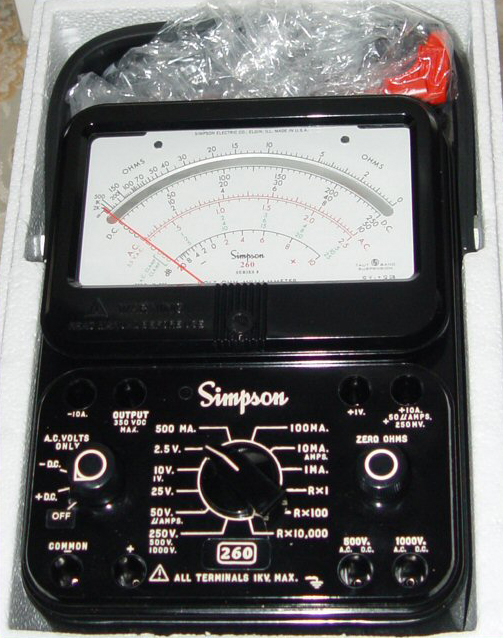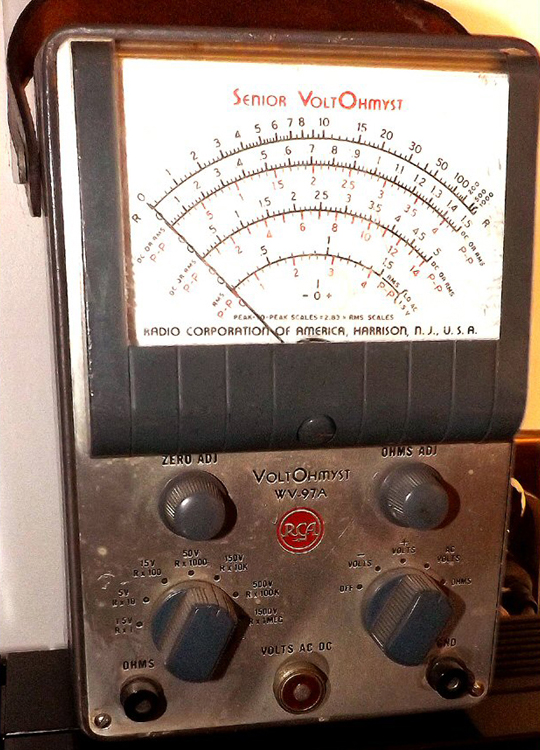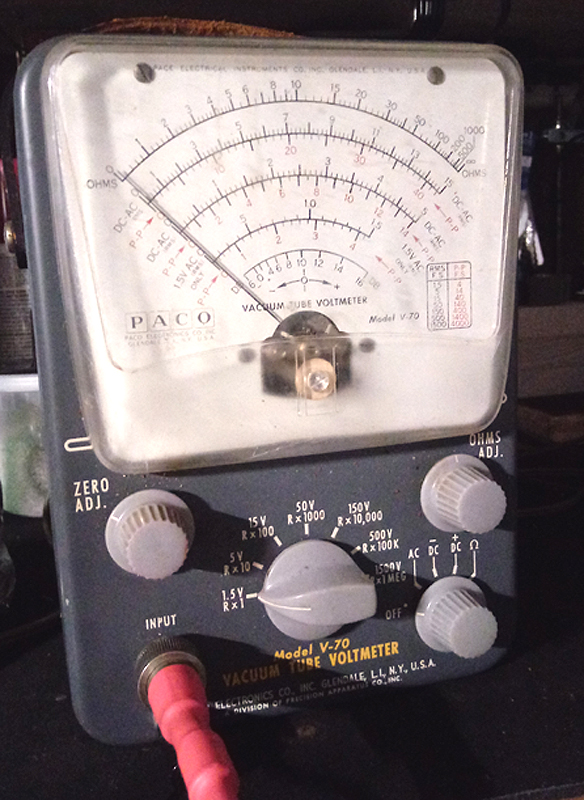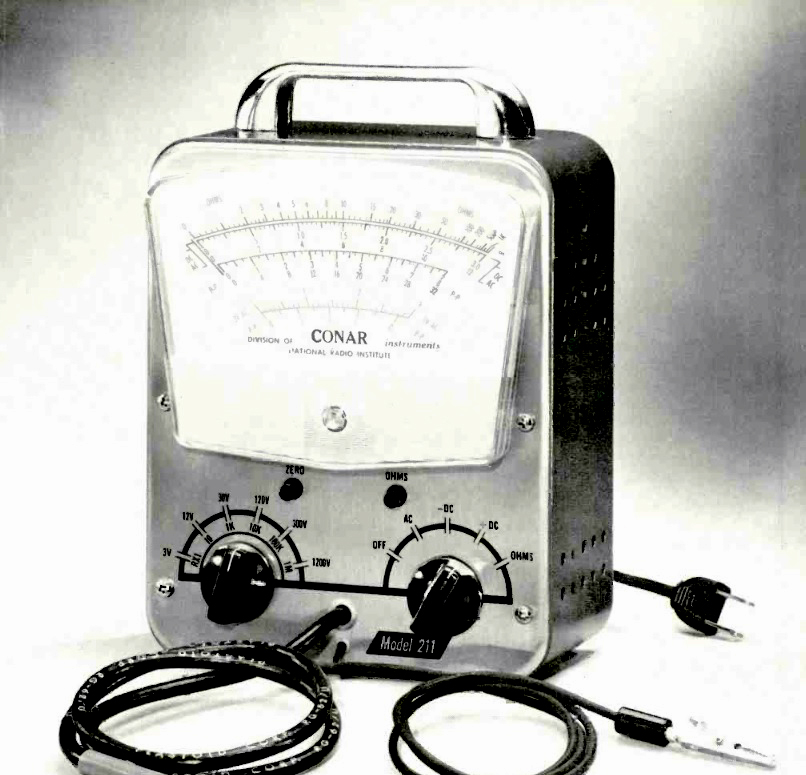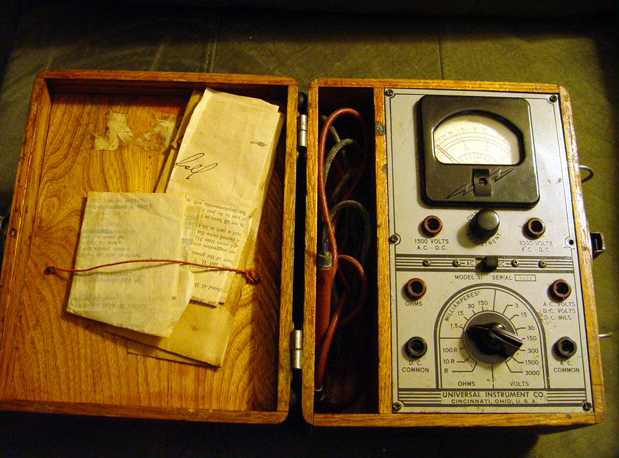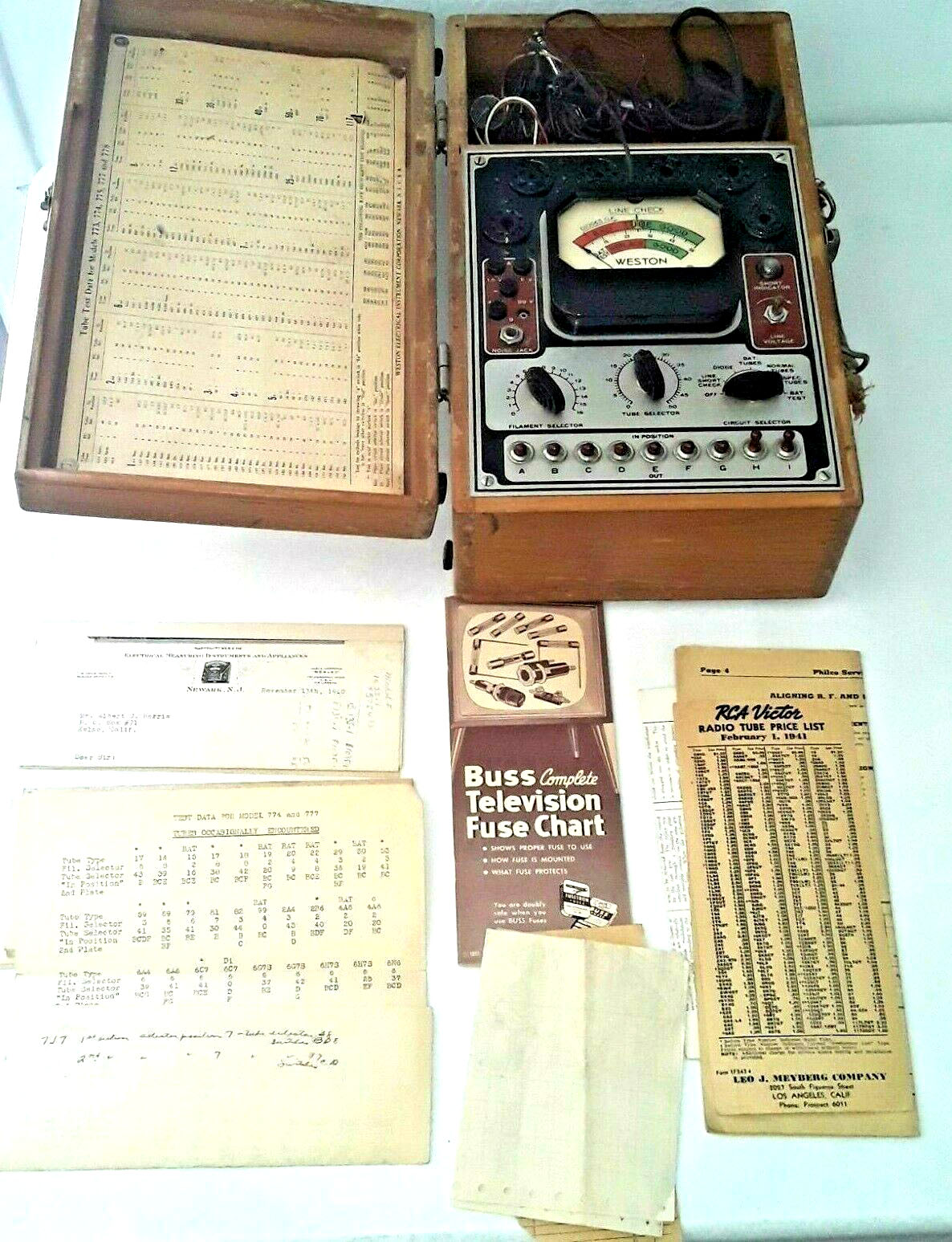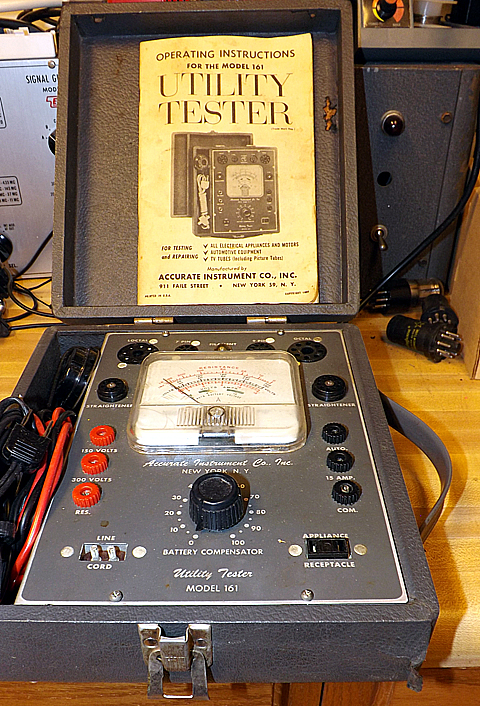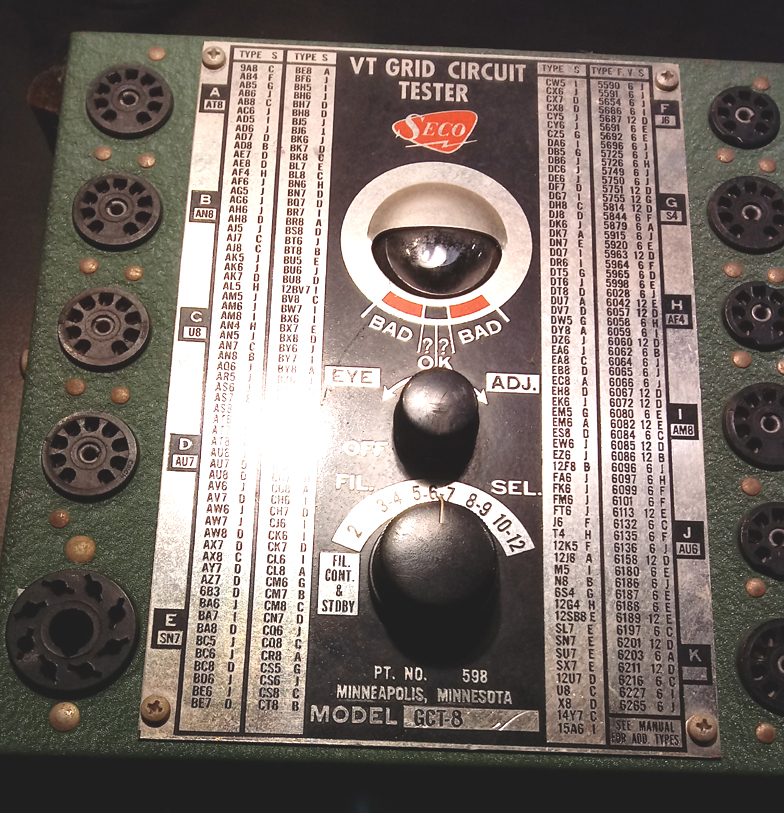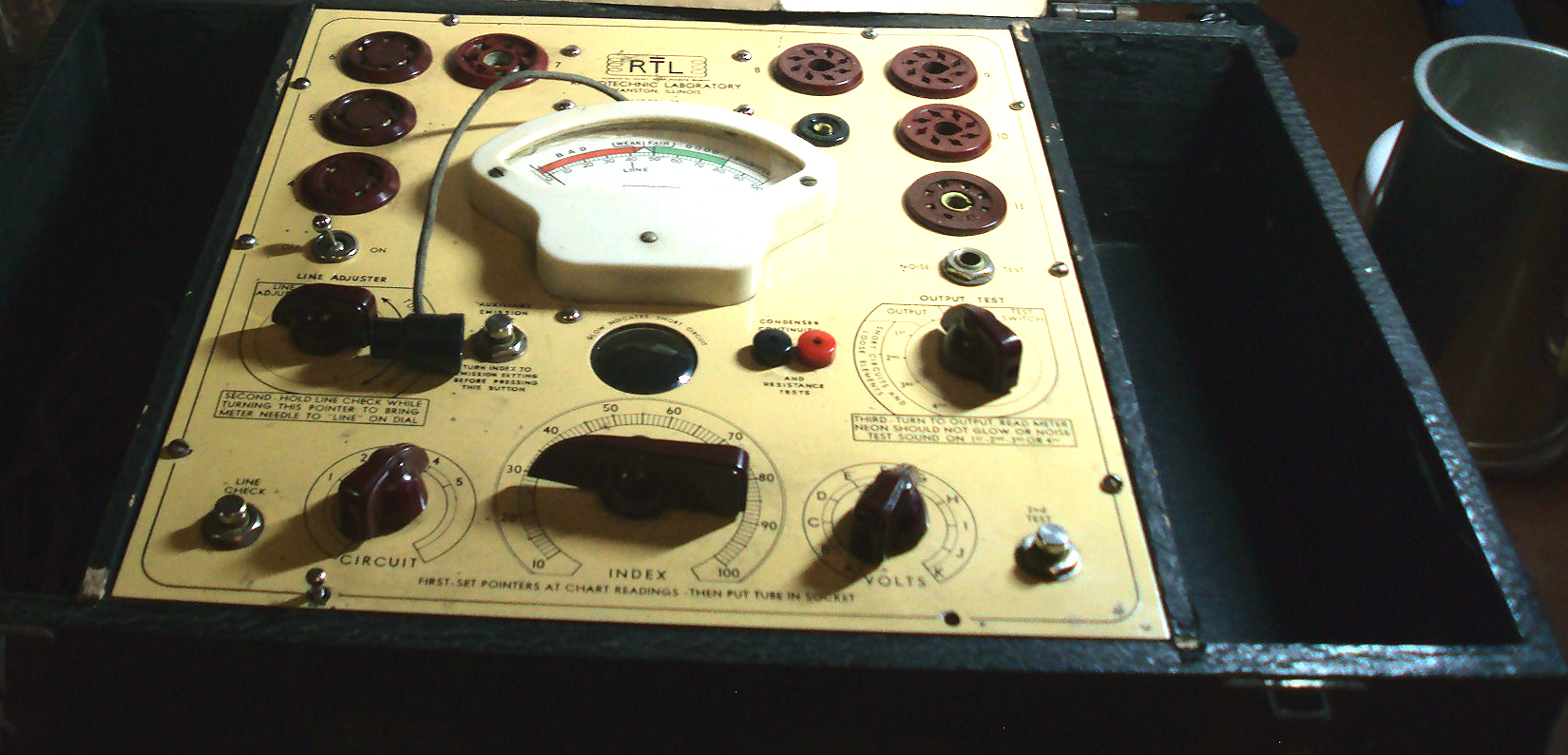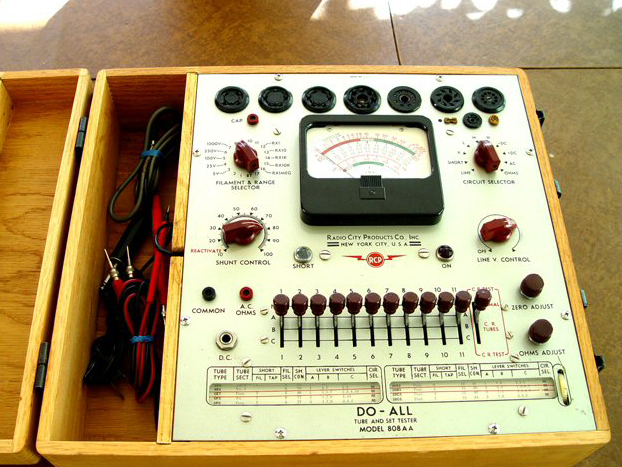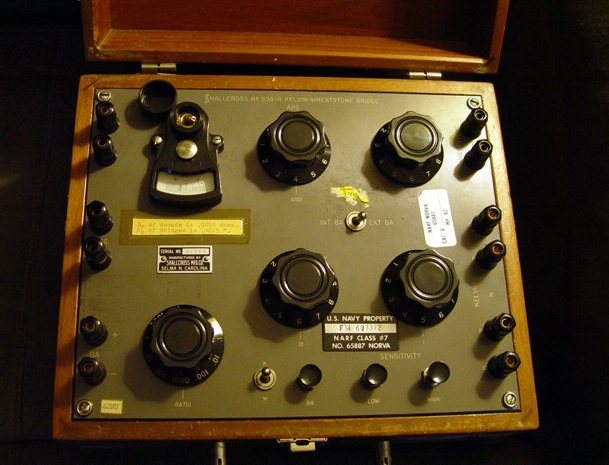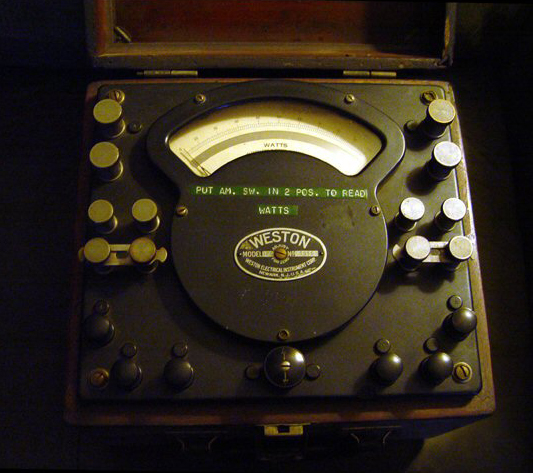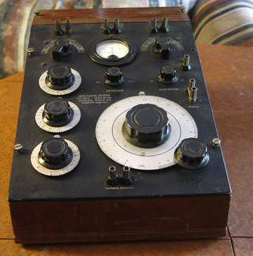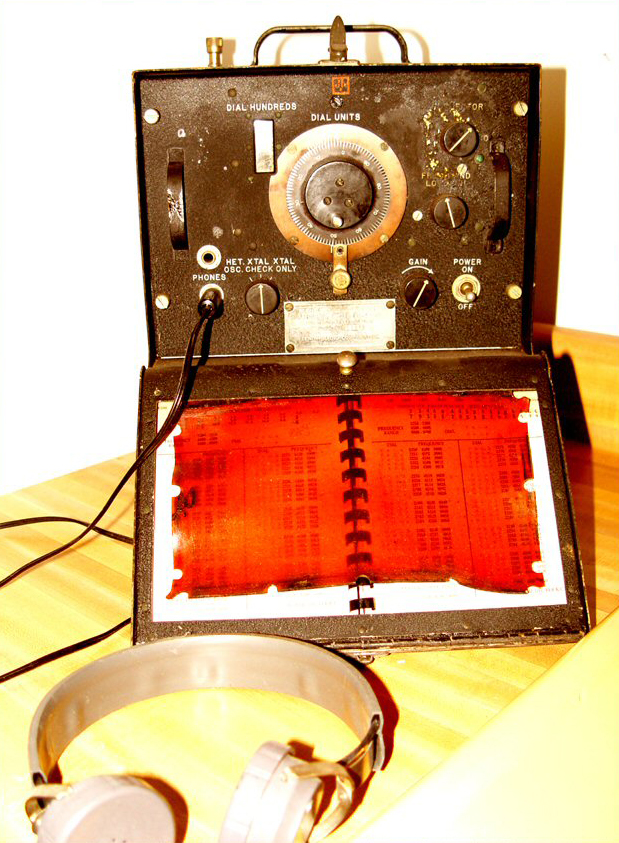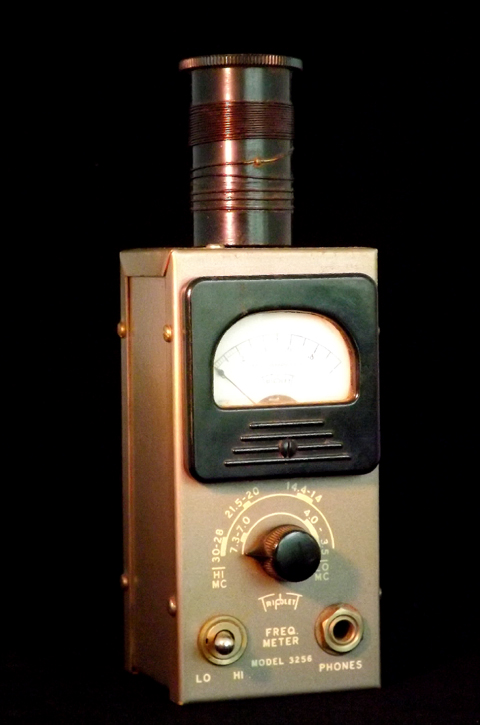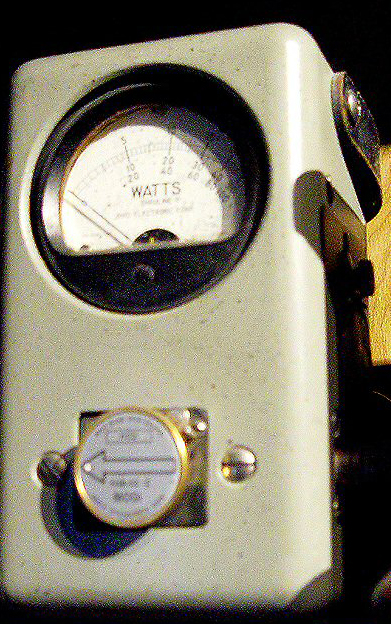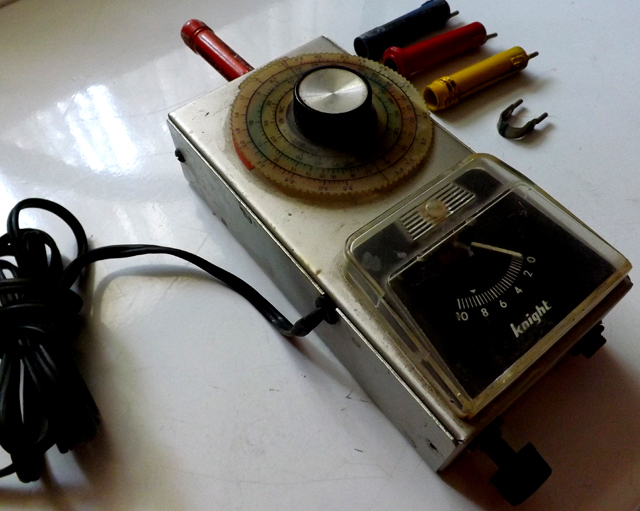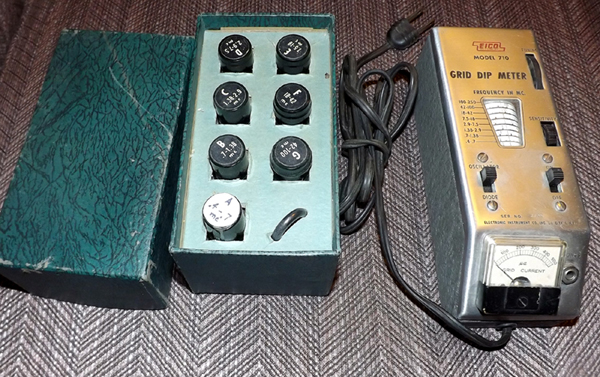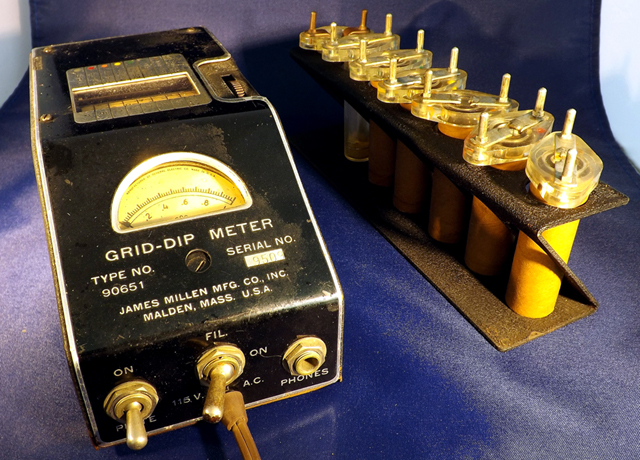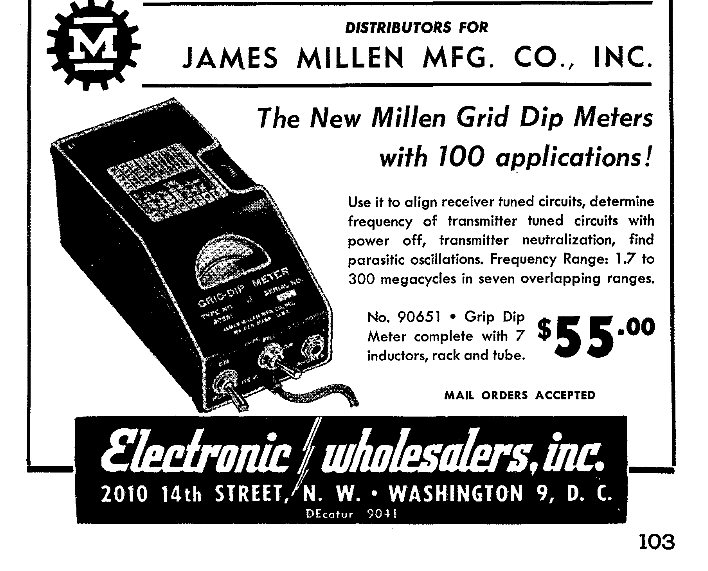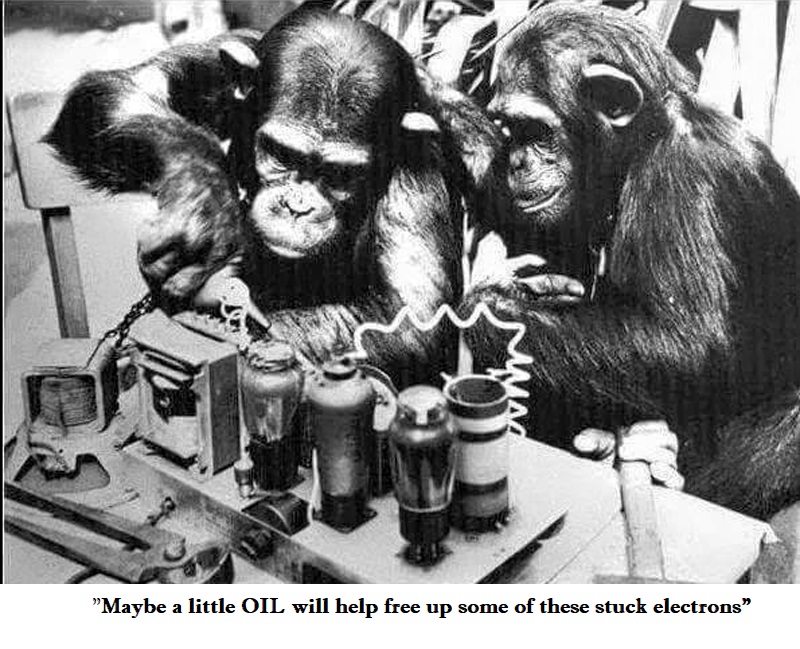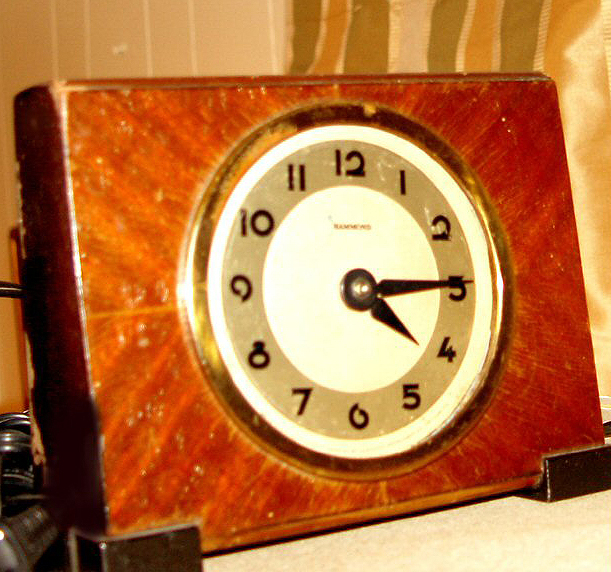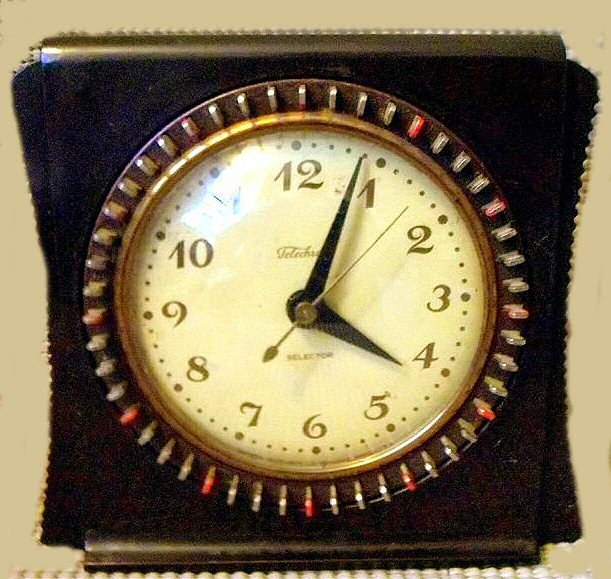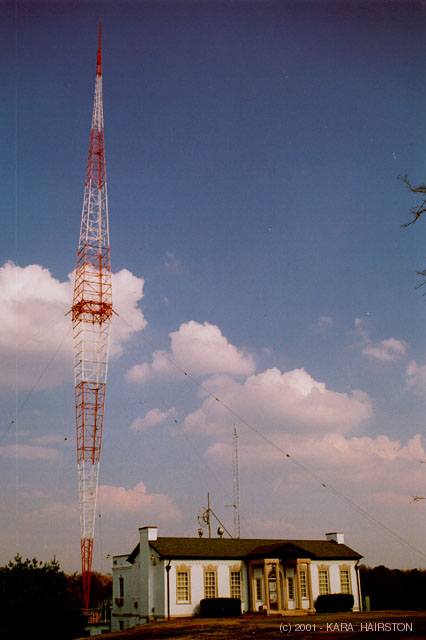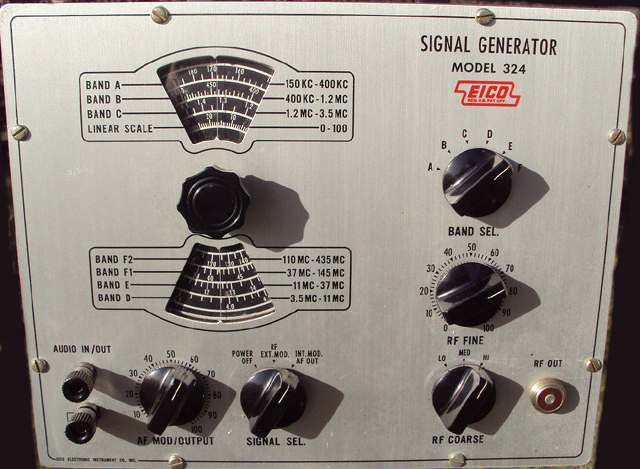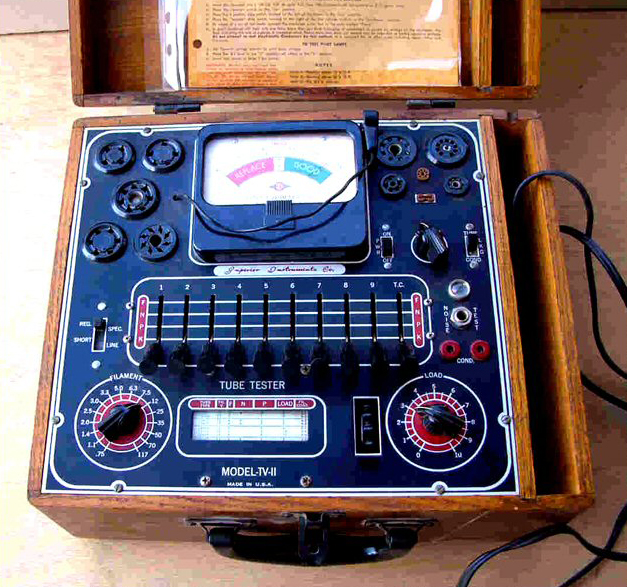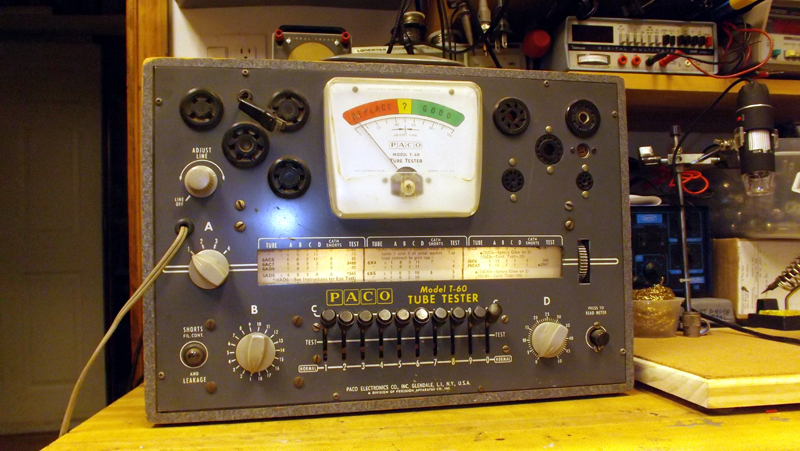|
|
|
|
|
THE RADIO SERVICE INDUSTRY |
In 1948, it was estimated that there were 150 million radios in use in the United States. The industry that kept these sets functioning was booming, especially since parts as well as new radios had been difficult or impossible to obtain during the war years. Thousands of radio repair shops existed across the American landscape, some operated by large national concerns such as RCA Service Company and Zenith, but many repair shops operated as privately owned, often "mon and pop" concerns. Radios of that era, whether large consoles or small portable or table radios, were hand-wired and therefore easily repairable either in the customer's home or in the service shop. Like physicians of that era, Radio and TV technicians still made "house calls." to service large consoles and early television sets. The radio repair business, and the early television repair ss as well, were lucrative for technicians and shops well into the 1960s.
A combination of high wage, insurance and mobility costs for shop owners, coupled with increasing difficulty in repairing cheaply made foreign equipment, along with difficulty in obtaining and stocking parts, are the main factors that destroyed the home electronics service industry by the 1980s.
The Museum Of Yesterday salutes the radio technician of old. Armed with nothing but SAMS Photofacts primitive test equipment, and their own gained experience, these technical gurus kept America's radios playing for more than half a century. In this gallery, we will visit some of the instruments that were considered essential in the repair shops of old.
|
|
This image is typical of radio service shops of the 1950s. Service technicians were called on to work on numerous brands and types of equipment, from radios, phonographs, televisions as well as other electronic devices. The technician had to be resourceful and familiar with the "bugs" that could affect the operatoin of each brand of set.
|
| |
|
(Above:) The radio service and restoration bench at the Museum of Yesterday is populated with a mixture of the most modern test equipment, as well as instruments dating back to the Golden Age of Radio. We have found that using authentic vacuum tube era test instruments is often the most efficient means of servicing our antique receivers and transmitters. Antique test gear has been found to be rugged and well suited, and in most cases the vintage instruments we acquired required little if any serious restoration. To insure accuracy, however, measurements are often confirmed using the latest digital equipment. |
| |
TRAINING FOR RADIO TECHNICIANS |
Most radio service technicians in the 20th Century were trained either in military branches, or in trade or technical schools. Various schools existed in localities around the country, but the most noted school was a correspondence school based in Washington, D.C. The National Radio Institute began in 1914, and at the height of its existence boasted 80,000 students. The school drew most of its students through ads in popular scientific magazines such as Popular Mechanics, Popular Science, Boys' Life and Popular Electronics. The ad below was typical of the school's advertising material from the era around World War II. For more history on NRI,

|
|
| |
COMMONLY USED SERVICE BENCH INSTRUMENTS |
|
The Chanalyst was the standard of every well equipped radio service business of the 1940s. |
|
Rear view of the RCA Chanalyst chassis
The Chanalyst is an all around service bench instrument that was extremely popular because of it's inclusion of several test instruments in the same case. The instrument functioned as a signal generator, tracer and volt ohm meter. In addition, it could function as an AM receiver on steroids.
Below is a catalog cut on the Chanalyst from the 1946 Allied Radio Catalog. It was a pricey but desirable fixture in those days.
|
|
| |
|
This instrument, which was designed for the museum's restoration shop by our founder, is essential in any antique radio service shop. It consists of a volt meter and ammeter in conjunction with a Variac and isolation transformer. A radio under test can be plugged into the instrument's power outlet, thereby allowing the technician to raise the voltage supplied to the set slowly, while observing the current draw. In the case of shorted components, there is warning of excessive current draw usually before any further damage occurs to the transformers or rectifier. It also contains a 120 volt isolation transformer, which is helpful in preventing damage or injury when working on "hot chassis" sets. The 120 Volt DC connections and internal rectifier were added when our technicians were servicing a 1920s Atwater Kent radio that was designed to run on 110 V DC power, which was still used at the time of manufacture in New York and other East Coast cities. |
| |
|
Throughout most of radio's "Golden Years," construction and servicing of sets usually involved the use of existing tools designed for electrical construction work such as the American Beauty soldering iron shown above. Heavy steel chassis, large gauge copper wire and bus bars, and large components such as transformers and coils, required sufficient heat to insure good solder connections. It was not until the end of World-War II that the Weller soldering gun was introduced, giving radio technicians an alternative to the use of large irons such as the one shown above.
Solder was also a separate component from the rosin flux cleaner that was needed to assist in the process. A typical soldering operation required dipping the iron into the soldering paste container, and then applying solder to the connection. With the advent of "core" solders, the rosin flux became an integral part of the solder wire, allowing both solder and flux to be applied in one operation.
With the advent of printed circuitry and micro-electronics in the late 1950s, new forms of soldering tools came on the scene. The "pencil" iron, along with electronic heat controls for critical soldering of small components, became the norm in the service business.
|
|
|
Often, the service technician of old was faced with re-winding coils, transformers, and other components which were not readily available from parts distributors. Experimenters and "do-it-yourself" hams also had occasion to form their own inductors when designing equipment. While it is not a piece of electronic test equipment, this Morris Coil Winder was a novel tool for winding small coils, and was extremely popular with experimenters and technicians, alike. |
| |
|
Another mid-century standard of the radio and TV service industry, was the Precision Sweep Generator Model E-400. It provided many service technicians of the era with a stable device for servicing AM and FM radios as well as television receivers. |
| |
|
Above image is the popular 1960s Eico Model 324 RF Signal Generator which was popular with service techs.
For a complete set of manuals on the Eico 324, both in ready-built and kit assembly form, click the image above. |
| |
|
This 1950s set of vintage resistance and capacitance substitution boxes were helpful in the laboratory or service shop when the technician or engineer had a need to substitute for a suspected defective carbon resistor or capacitor, or when the selection of an experimental value was needed in the design of a circuit. These devices were relatively inexpensive in their day, and extremely popular with hams and experimenters around the mid-century electronics hobby boom. |
| |
|
The SOLAR model CE capacitor checker was one of the often utilized instruments at the DeMajo Electronics Laboratory in New Orleans during the mid-20th Century era. After many years of searching, the museum was recently able to locate a Model CE for our permanent collection. You can view the manual for the Solar CE by clicking the button below.

|
| |
|
Above: RF signal generator and signal tracer kits by the Heathkit Company of Benton Harbor, Michigan
The Heath Company of Benton Harbor, Michigan, entered the peace time electronics supply market at the end of World-War II. Originally started as a producer of military electronics, and using the same step-by-step assembly techniques it had employed with its own workers during the war, the company developed a line of "assemble-it-yourself" kits that became extremely popular with it's post war, electronics-savvy customer base. At first, many of the products used surplus parts stock which the company had left over after war-time products were no longer needed.
Heathkit products kept up with the market for nearly a half-century, and eventually included complex kits such as color televisions, electronic organs and state-of-the-art ham radio and stereo high fidelity products. |
| |
|
More "Tube Era" pieces of test equipment by Heathkit and Speco. At left is a Heathkit capacitor tester and at right is a SPECO signal tracer. Note electric eye tubes which were common substitutes for meters during that era. Below is a 1946 Allied Radio Corporation Catalog display of the Speco signal tracer. |
|
| |
|
The Simpson 260 Volt-Ohm Meter was a work horse in the vacuum tube era |
| |
|
The RCA "Senior VoltOhmyst" vacuum tube volt meter came into wide use in commercial repair shops as transistor based radios and televisions came onto the market. In many cases, the battery voltages in use in older Volt Ohm Meters were capable of damaging solid state devices. The VTVM provided a means to measure circuitry with an extremely high ohms-per-volt specification, thereby minimizing the possibility of damaging delicate components,. |
| |
|
As the introduction of solid-state consumer electronics grew, the demand for inexpensive portable vacuum tube volt meters increased. Electronic meters now came into the price range comparable with the old industry standard Simpson 260, and many of the products were offered in kit form. Shown above is an Eico V-70 and a Conar unit that was sold through the popular correspondence technician training school National Radio Institute. In addition to Eico, Heathkit and Allied Radio also offered VTVMs in kit form. The museum exhibit contains several examples of popular VOM and VTVM units of that era. |
| |
|
A Volt-Ohn meter in wooden case, from the mid 1930's |
| |
| |
TUBE TESTERS |
What are the various types of tube testers, and what are the differesncs?
Tube testers come in a variety of styles and functionality. Generally the three main categories are those that only test filament continuity, emission checkers and mutual transconductance testers, The most thorough test can only be done with a mutual transconductance tester.
Aside from the filament only tester, which is usually made up of a neon bulb and resistor that are placed in series with the tube filament, the most common type is the Emission checker. These instruments place the tube into a circuit where plate voltage is applied to the tube, and a meter then reads the amount of current that flows through the tube with a suggested grid bias. If the tube is weak, fewer electrons will boil off of the cathode, so the meter will indicate insufficient current flow and therefore a weak tube. Most emission checkers also have the ability to detect shorts and noisy or loose elements, and some can even check continuity or capacitors.
The mutual transconductance tester is a much more complex instrument that not only places the subject tube into a working circuit, but these instruments can also simulate various conditions to which a tube might be subjected in specific applications such as audio processing, RF generation or amplification, and other special purposes. They are much more complex to operate, and usually are considerably more expensive than emission testers.
|
| |
|
After many years of searching, the museum was able to locate and add this Weston Model 777 tube checker to our collection of service instruments. This piece is of particular significance because the father of our founder owned this same model Weston instrument, and used it in his research laboratory located on the grounds of the DeMajo New Orleans home in the 1940s and 50s. |
| |
|
Our test and service instrument collection includes many varieties of tube checkers. Shown above is a simple combination tube checker and service meter, from Accurate Instruments Company, that was intended for hobbyists, field techs and quick checking of tubes in commercial shops. Below are some of the more sophisticated tube checkers of the era. |
| |
|
Another simple tube tester that provided "quich checks" of vacuum tube electron emission. |
| |
|
Our1930s Radiotechnic Laboratories Model M, Series E tube tester. |
| |
|
Radio City Products Model 808-AA tube tester from late 1940's |
| |
|
Superior Instruments Model TV-II tube tester from the 1930s.
Manuals and settings charts are available.
Click here for operating manual 
Click here for roll chart 
Click here for supplemental tube chart 
Click here for "How To Use Your TV-11 Tube Tester"  |
|
|
Precision Instruments produced a line of test instruments in kit form under the PACO brand. This PACO T-60 tube tester is a bare bones emission type tester that has brought in some significant prices lately in Ebay auctions. An owner's manual is available by clicking the photo. |
| |
LABORATORY GRADE INSTRUMENTS |
|
A U.S. Navy surplus thermal Whetstone bridge from WW-II |
| |
|
Weston thermal RF wattmeter from the 1940's |
| |
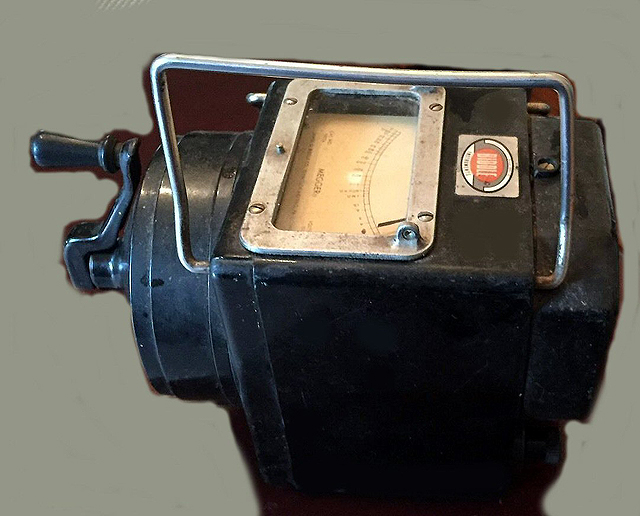 |
This James Biddle megger is a recent addition to the collection. Used to measure potential breakdown of electrical equipment when high voltage is applied, the instrument will serve both as an exhibit and as a working test instrument in the service and maintenance of our communications and scientific instruments collections. |
| |
| |
|
Laboratory type Wheatstone Bridge |
| |
|
Anyone who studied electronics or radio servicing in a military or trade school setting during the mid-20th Century, will probably recognize this Superhet Radio Classroom Trainer. A working 5 tube superhetrodyne radio, based on the popular "Famous Five" tube line-up of most AM radios of the late 1930s through the early 1960s, this training aid was used to demonstrate radio troubleshooting to trainees in a classroom setting. Later, this same "breadboard" concept was employed in educational toys designed to give youngsters a vehicle for learning how electronic circuits functioned. To see a short video of the trainer in operation, click the photo above.
|
|
|
A World War II vintage BC221-T frequency meter. These heterodyne type instruments were undisputed standards of the world prior to the introduction of digital frequency counting instruments. |
| |
| |
AMATEUR RADIO TEST INSTRUMENTS |
|
This instrument is a Triplett Model 3256 frequency meter. Its purpose was to detect a desired signal which was being generated by an amateur radio (Ham band) transmitter, and roughly identify the frequency and band on which the transmitter was operating. It contains a germanium diode signal rectifier/detector, a tuned circuit and a meter. The signal could also be listened to by connecting a headphone to the "phones" jack, in which case it will serve as a signal monitor and receiver. The frequency range of the instrument is 3.4 Mhz-30 Mhz in two switchable band increments. Date of manufacture is circa 1952. |
| |
|
The Bird RF Wattmeter, with it's interchangable elements, was the gold standard for many decades when it came to transmitter alignment and performance. |
|
|
Knight-Kit Grid Dip Meter (kit form-assembled) made by Allied Radio Corporation of Chicago, IL. |
| |
|
| Competition among 1950s electronics kit manufacturers was not limited to transmitters and receivers. There was also heavy competition in the test instrument kit area. In the photos above, you can see the contrast between Allied Radio's grid dip meter, and that made by Eico. Heathkit also produced a similar model. |
| |
|
Above: Millen Model 90651 grid dip meter. Below: an ad for the Millen Model 90651 from the ARRL's September 1949 issue of QST Magazine. This one was not a kit, and the manufacturer advertised it as a commercial grade test instrument. |
|
| |
| |
|
|
| |
HAMMOND CLOCKS |
| |
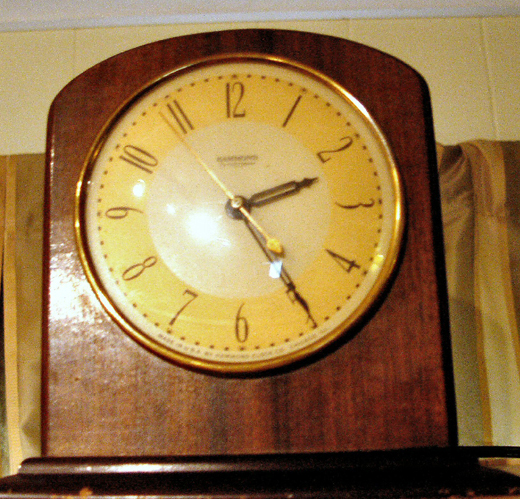 Hammond "Como" model synchronous clock made by Laurens Hammond's Clock Company. This clock was acquired in 1938 by the father of museum's founder. It was purchased with coupons from Kool cigarettes that could be redeemed for merchandise.
Hammond "Como" model synchronous clock made by Laurens Hammond's Clock Company. This clock was acquired in 1938 by the father of museum's founder. It was purchased with coupons from Kool cigarettes that could be redeemed for merchandise. |
 |
Hammond clocks were made by a company founded by Laurens Hammond, inventor of the Hammond Electric Organ. They were highly sought after in the 1930's because of their ac power line synchronous accuracy. While they were once common in American households, Hammond clocks are now relatively rare and highly valued as collectors' items. Many Hammond clocks were junked because of their "manual start" feature which required the spinning of a wheel on the back of the clock in order to initialize the motor after a power failure. This was thought to be a nuisance by many owners once self-starting electric clock motors came into use. The clock below is a Hammond "Mentor" model, which is a bed-side alarm clock using the patented Hammond mechanism.. |
|
| |
|
| |
|
This clock is not made by the Hammond company, but we included it in the museum's communications devices and clock collection because it is one of the first automatic time clocks available to the civilian market. Developed during World War II, the WARREN TELECHRON CO. ASHLAND MS. USA introduced this instrument in the years immediately after the war as an accessory to home wire and tape recording devices which were also gaining popularity at that time. The clock could be set to activate the recording device at a specific time, thereby allowing 1950s users to make unattended recordings of their favorite radio shows for later listening. |
| |
| |
PLEASE PROCEED TO NEXT GALLERY |
| |
|
|
| |
Copyright 2023, The Museum Of Yesterday |
|
